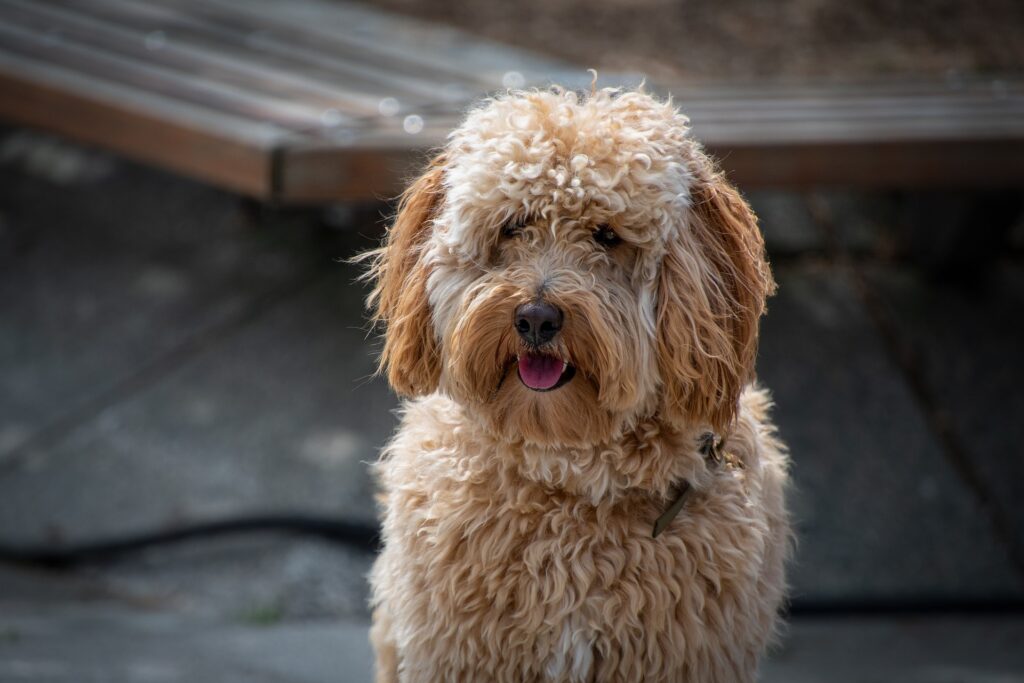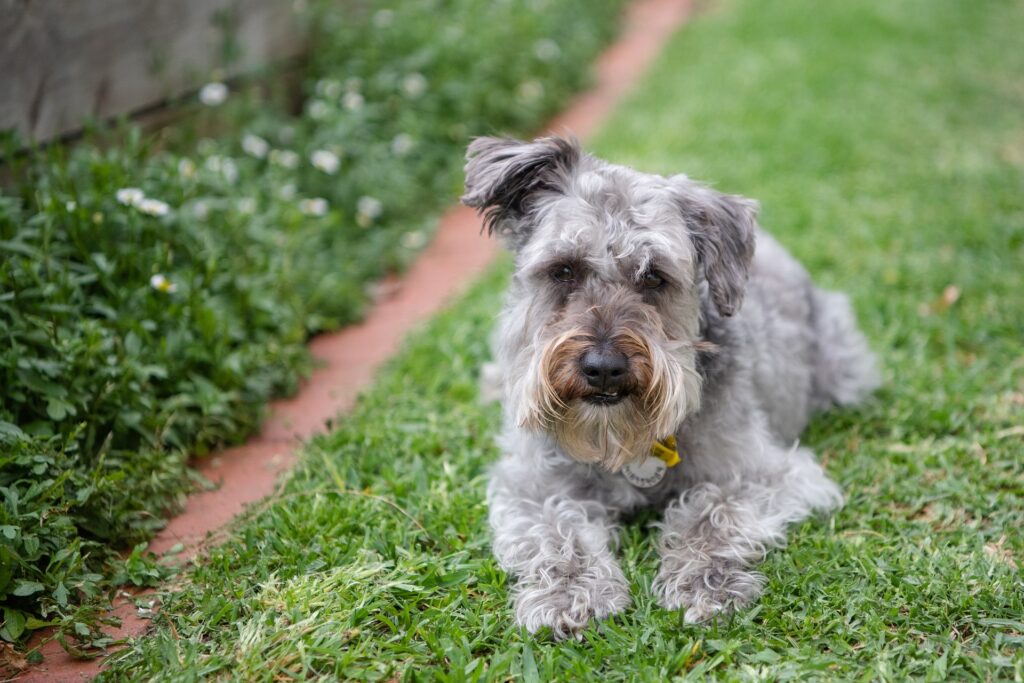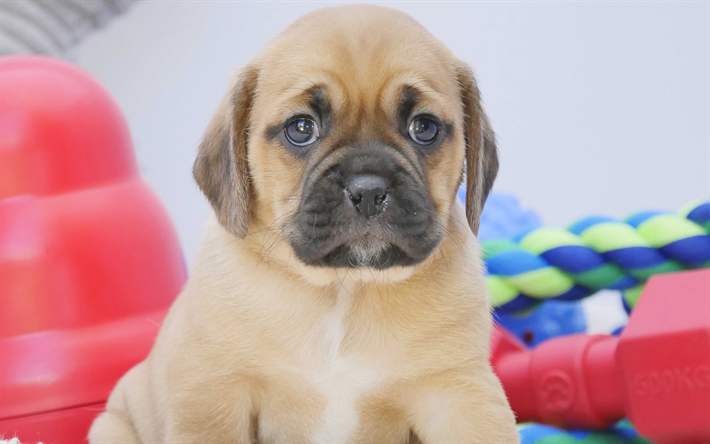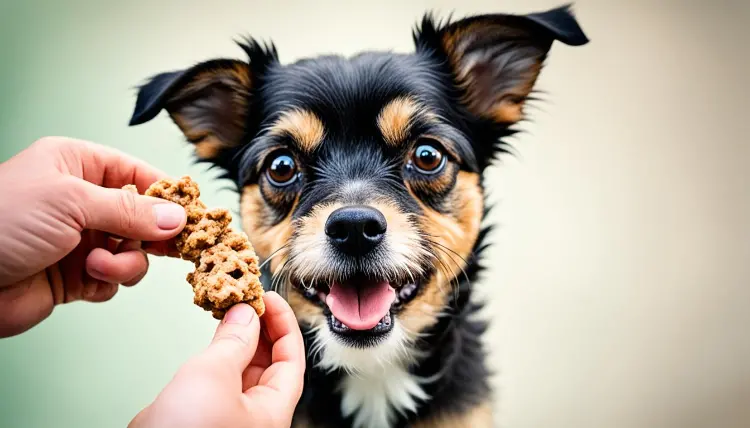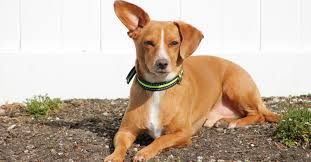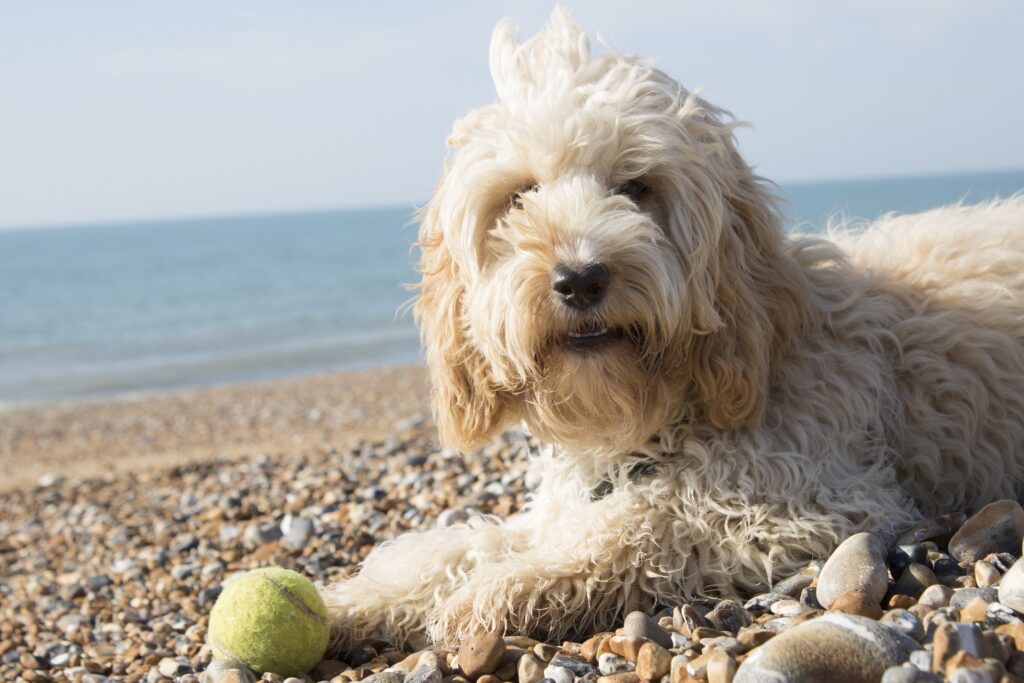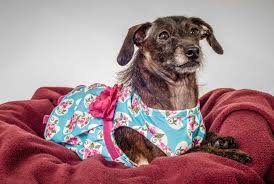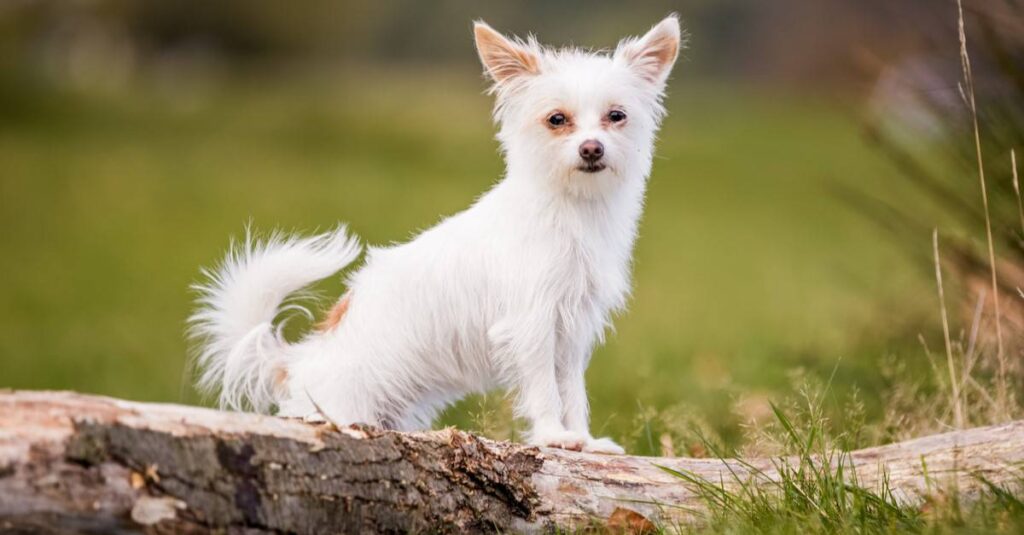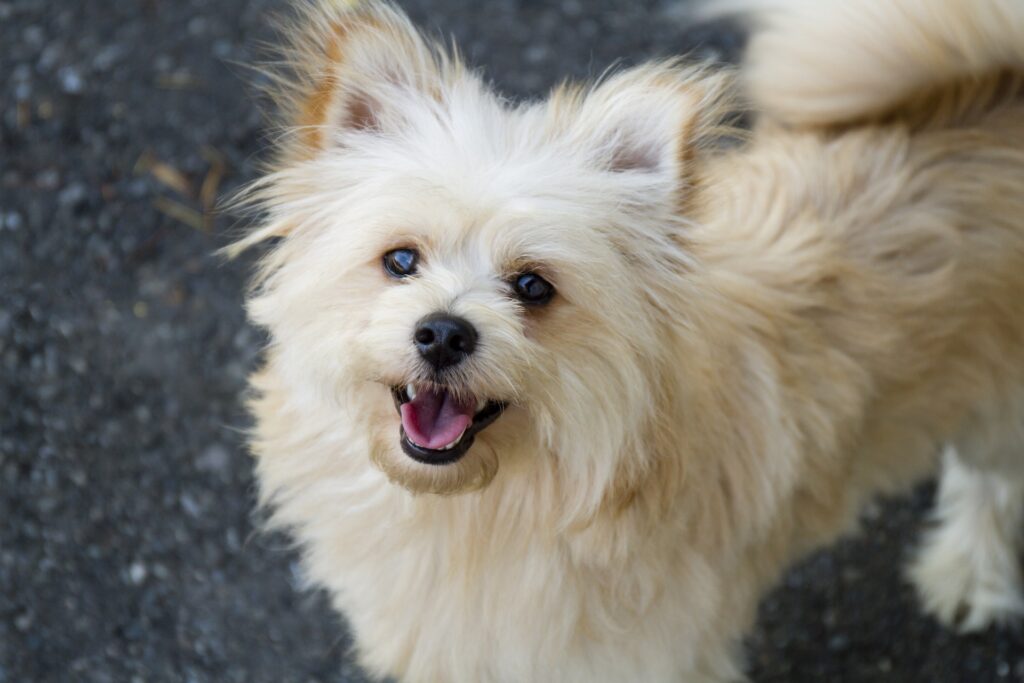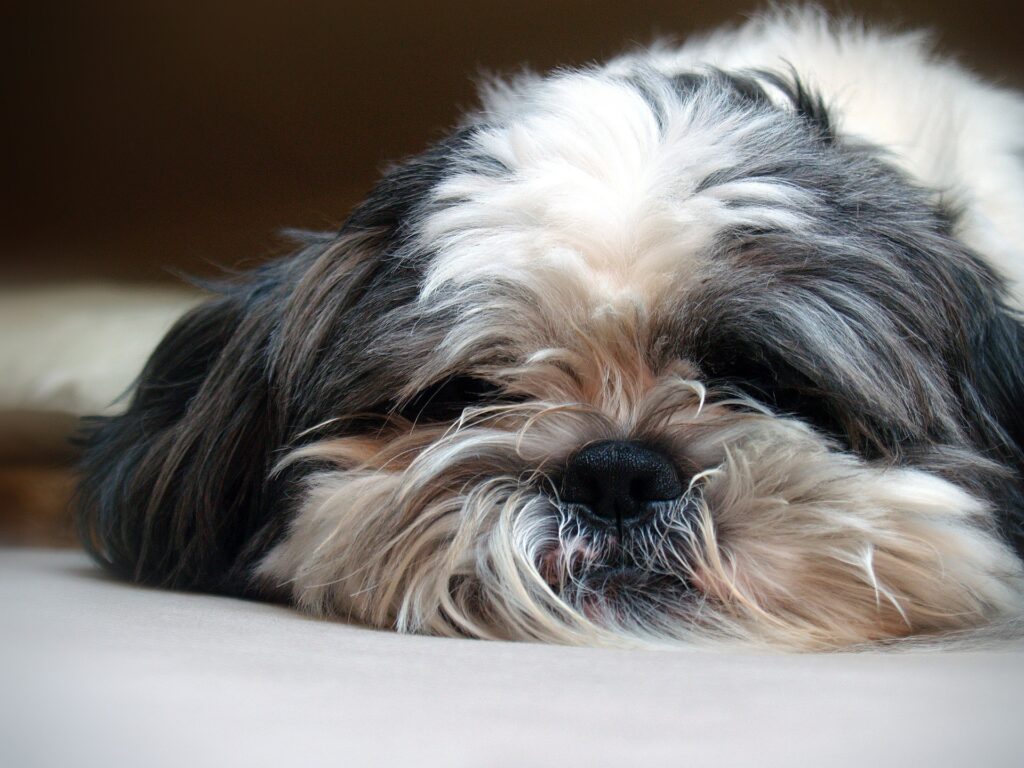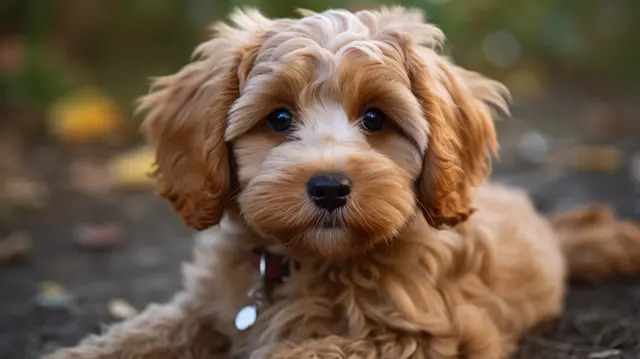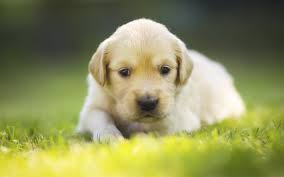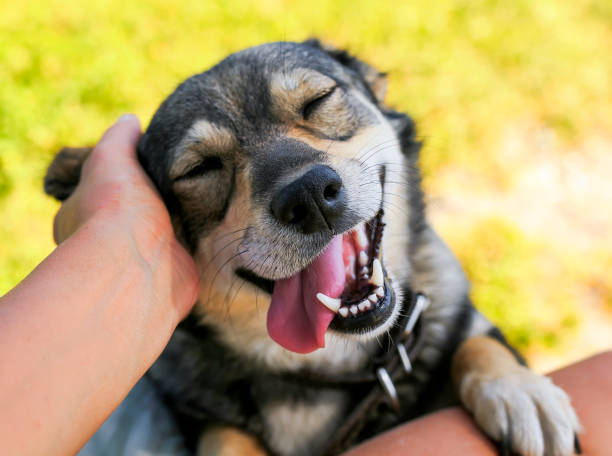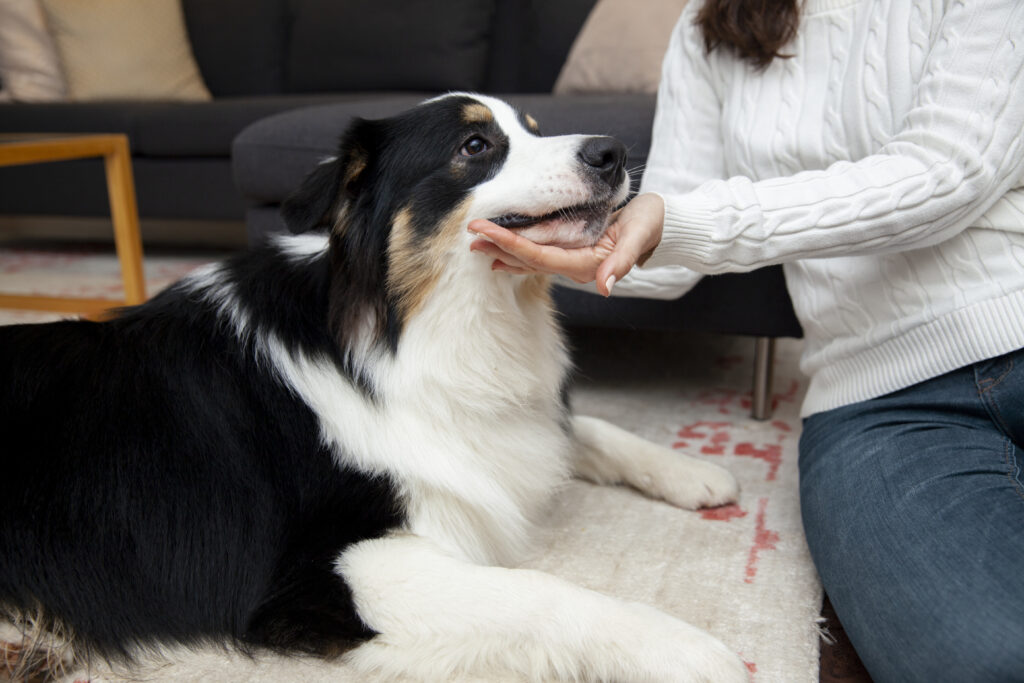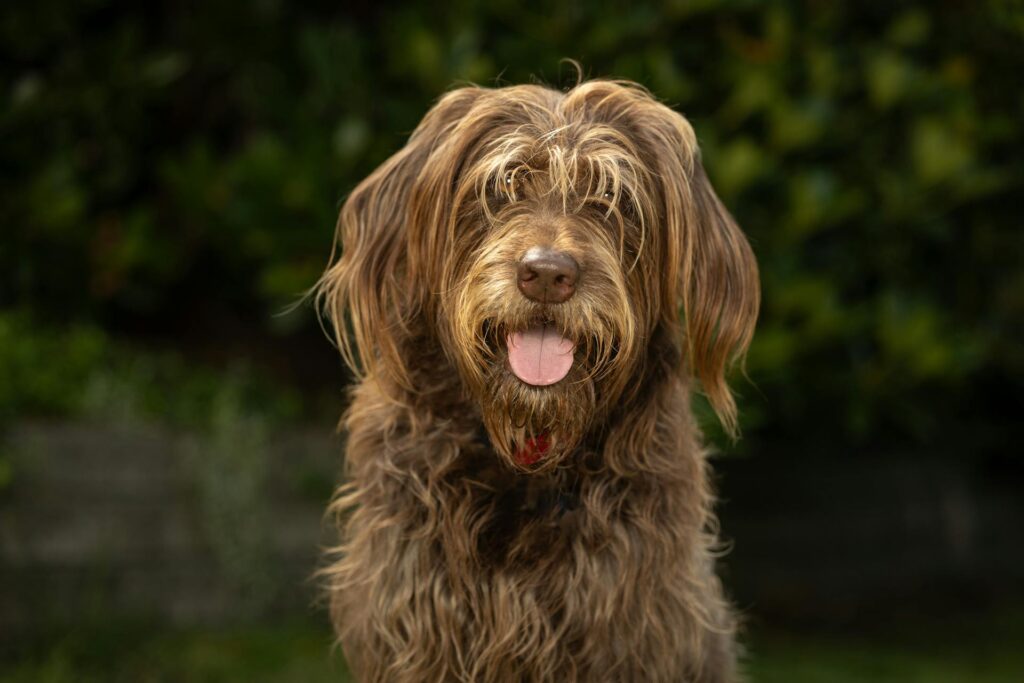
Have you ever looked at your furry friend and thought, “Hmm, I love them, but wouldn’t it be cool if they were a little bit more…”? Maybe you adore the playful spirit of a Golden Retriever but crave the hypoallergenic coat of a Poodle. Or perhaps you admire the loyalty of a German Shepherd but wish for a smaller size suitable for apartment living. This is where the fascinating world of designer dogs comes in!
What Exactly is a Designer Dog?
Designer dogs, also known as hybrid dogs or mixed breed dogs, are intentionally bred by crossing two purebred canines. The goal is to combine the desirable traits of both parent breeds, resulting in a dog with specific characteristics in terms of appearance, temperament, and even potential health benefits. It’s important to note that designer dogs are not a recognized breed by major kennel clubs like the American Kennel Club (AKC) due to their mixed heritage. However, they’ve grown increasingly popular amongst dog lovers seeking unique companions.
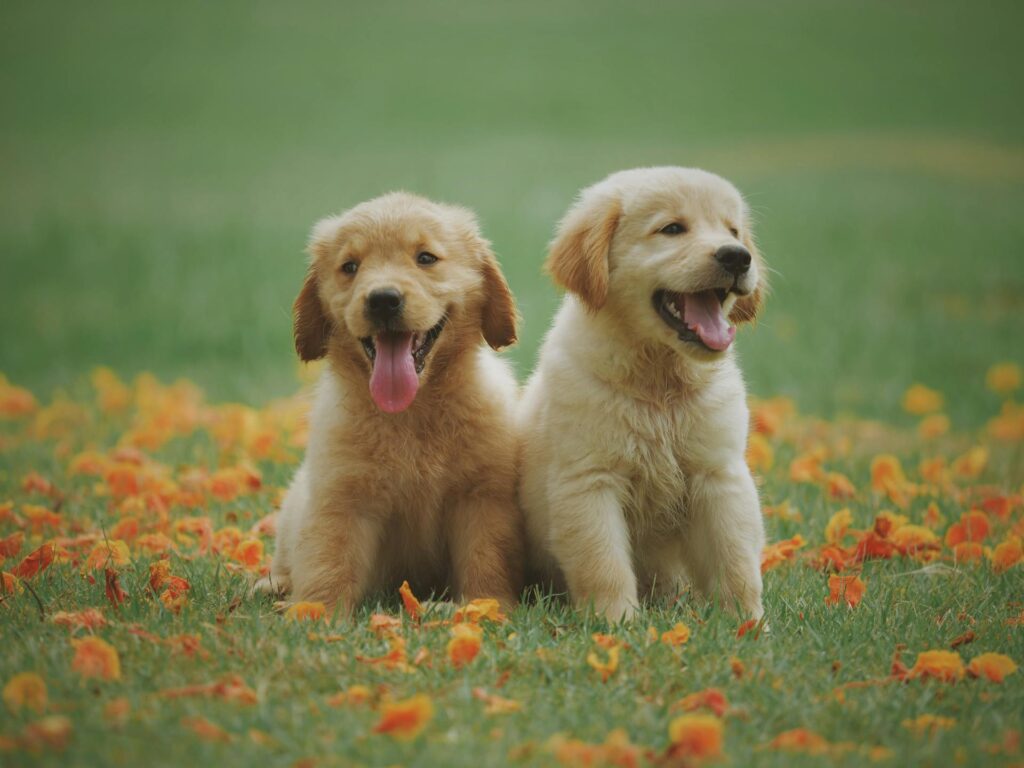
Also Read: Why is My Dog Losing Hair? Hair Loss In Dogs
Top 20 Designer Dog Breeds: Tailored for Different Tastes
Let’s delve deeper into some of the most popular designer dog breeds, exploring their unique characteristics to help you find your perfect match:
The Big Six:
The top 6 breeds of designer dogs are listed below:
Labradoodle:
- Energy Level: Moderate to High. Labradoodles love playtime and walks but can also be cuddly companions.

- Size: Standard Labradoodles can be quite large, reaching up to 65 cm (26 inches) tall at the shoulder. Miniature Labradoodles are more suitable for smaller living spaces, while Toy Labradoodles are perfect for apartment living.
- Temperament: Labradoodles are known for their friendly, outgoing personalities. They are intelligent, eager to please, and excellent with children.
- Grooming Needs: Regular brushing (a few times a week) is essential to maintain their coat and prevent matting. Professional grooming every few months might be necessary.
- Training Needs: Labradoodles are generally easy to train due to their intelligence and desire to please. Early socialization and positive reinforcement training are recommended.
Goldendoodle:
- Energy Level: Moderate to High. Goldendoodles are playful and energetic dogs who require daily walks and playtime.
- Size: Similar to Labradoodles, Goldendoodles come in Standard, Miniature, and Toy sizes to suit various living situations.
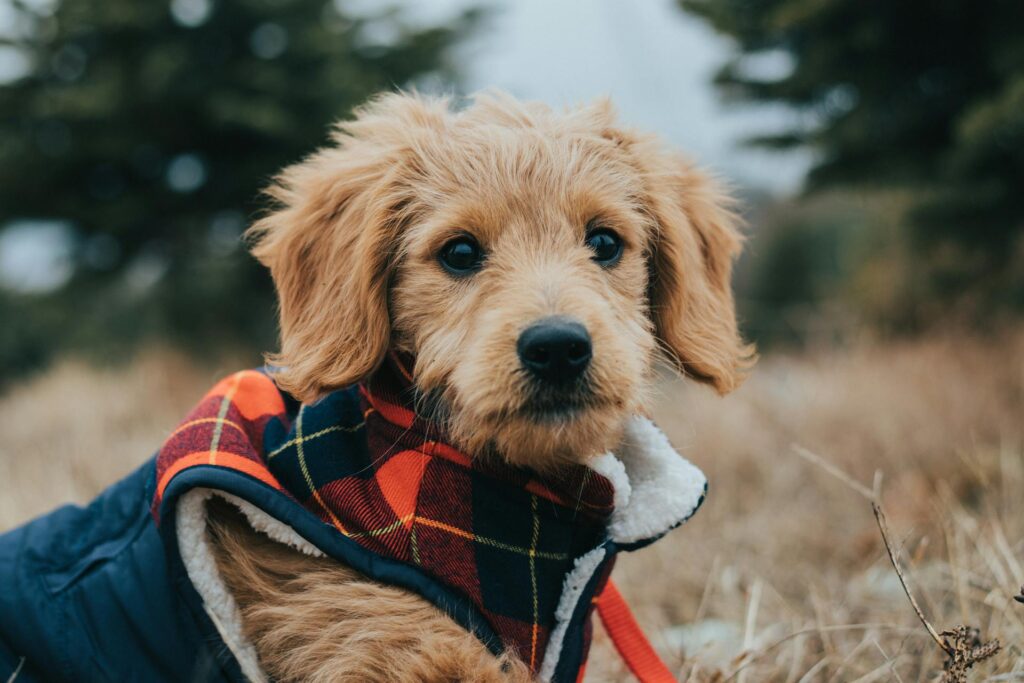
- Temperament: Goldendoodles are known for their sunny personalities, friendliness, and loyalty. They are excellent family dogs and social butterflies.
- Grooming Needs: Regular brushing (a few times a week) is crucial to prevent matting. Professional grooming every few months is recommended.
- Training Needs: Goldendoodles are intelligent and eager to please, making them generally easy to train. Positive reinforcement training methods work best.
Schnoodle:
- Energy Level: Varies depending on the size. Giant Schnoodles will require more exercise than Miniature Schnoodles. Expect moderate to high energy levels overall.

- Size: Giant Schnoodles can be quite large, reaching up to 70 cm (28 inches) tall at the shoulder. Standard Schnoodles are medium-sized, while Miniature Schnoodles are more compact.
- Temperament: Schnoodles are intelligent, loyal, and playful dogs. They can be wary of strangers but bond strongly with their families.
- Grooming Needs: Schnoodles have a wiry coat that requires regular brushing (a few times a week) and professional grooming every few months to maintain its texture and prevent matting.
- Training Needs: Schnoodles are intelligent and can be trained well, but their independent streak sometimes requires patience and consistency. Early socialization is crucial.
Yorkipoo:
- Energy Level: High. Yorkipoos are energetic little dogs who love playtime and walks. They are surprisingly athletic for their size.

- Size: Yorkipoos are tiny dogs, typically weighing less than 7 kg (15 lbs) and standing under 25 cm (10 inches) tall at the shoulder.
- Temperament: Yorkipoos are known for their playful, feisty personalities. They are loyal and affectionate with their families but can be wary of strangers.
- Grooming Needs: Yorkipoos require regular brushing (daily is ideal) and professional grooming every 4-6 weeks to maintain their long, silky coat.
- Training Needs: Yorkipoos can be stubborn and require patience and positive reinforcement training. Early socialization is important to prevent them from becoming yappy.
Puggle:
- Energy Level: Moderate. Puggles enjoy walks and playtime but are also content to cuddle on the couch.

- Size: Puggles come in a variety of sizes depending on the Puggle’s parents. They are generally medium-sized dogs, weighing around 14-18 kg (30-40 lbs).
- Temperament: Puggles are known for their playful and gentle personalities. They are loving companions and great with children. They can be stubborn at times but are overall easygoing dogs.
- Grooming Needs: Puggles have short, double coats that require minimal brushing (once or twice a week). Regular baths are not necessary.
- Training Needs: Puggles are intelligent and can be trained with positive reinforcement methods. However, their stubborn streak might require patience.
Also Read: 07 Major Reasons Why is my Dog Aggressive towards Other Dogs
Pomsky:
- Energy Level: High. Pomskies inherit the energetic nature of the Siberian Husky and require daily walks and playtime to burn off their energy.

- Size: Pomskies vary in size depending on the parents. They can be medium-sized, reaching up to 40 cm (16 inches) tall at the shoulder, or smaller depending on the Pomenarian influence.
- Temperament: Pomskies are intelligent, playful, and loyal dogs. They can be vocal and require consistent training to prevent excessive barking. Early socialization is crucial to ensure they are comfortable around strangers and other dogs.
- Grooming Needs: Pomskies have a thick double coat that requires regular brushing (a few times a week) to prevent matting. Professional grooming every few months might be necessary.
- Training Needs: Pomskies are intelligent but can be stubborn. Positive reinforcement training with patience and consistency is key. Early socialization is vital to manage their high energy and potential wariness of strangers.
Beyond the Big Six:
Maltipoo:
- Energy Level: Moderate. Maltipoos are playful and enjoy walks and playtime but can also be cuddly companions.

- Size: Maltipoos come in various sizes (Toy, Miniature, and sometimes even Standard) depending on the Poodle parent’s size.
- Temperament: Maltipoos are known for their gentle, affectionate personalities. They are intelligent and eager to please, making them excellent family companions.
- Grooming Needs: Maltipoos have a long, silky coat that requires daily brushing and professional grooming every 4-6 weeks to prevent matting.
- Training Needs: Maltipoos are intelligent and respond well to positive reinforcement training. Early socialization is recommended.
Cavachon:
- Energy Level: Moderate. Cavachons enjoy walks and playtime but are also content to cuddle on the couch.

- Size: Cavachons are small dogs, typically weighing less than 9 kg (20 lbs) and standing under 25 cm (10 inches) tall at the shoulder.
- Temperament: Cavachons are known for their gentle, affectionate personalities. They are playful and adaptable, making them excellent family companions.
- Grooming Needs: Cavachons have a medium-length, silky coat that requires regular brushing (a few times a week) and professional grooming every 4-6 weeks to prevent matting.
- Training Needs: Cavachons are intelligent and respond well to positive reinforcement training. Early socialization is recommended.
Also Read: Do Dogs Have Their Own Language? How Can I Understand my Dog’s Language?
Peekapoo:
- Energy Level: Moderate. Peekapoos enjoy walks and playtime but are also happy to cuddle.
- Size: Peekapoos are small to medium-sized dogs, typically weighing less than 14 kg (30 lbs) and standing under 38 cm (15 inches) tall at the shoulder.

- Temperament: Peekapoos are known for their playful and loyal personalities. They are adaptable and relatively easygoing, making them suitable for various living situations.
- Grooming Needs: Peekapoos can have a variety of coat types depending on the parents. Some have short, double coats requiring minimal brushing, while others have longer, flowing coats that require regular brushing and professional grooming every few months.
- Training Needs: Peekapoos are intelligent and can be trained well with positive reinforcement methods. Early socialization is recommended.
Chiweenie:
- Energy Level: High. Chiweenies are surprisingly energetic for their small size and require daily walks and playtime to burn off their energy.

- Size: Chiweenies are tiny dogs, typically weighing less than 5 kg (10 lbs) and standing under 23 cm (9 inches) tall at the shoulder.
- Temperament: Chiweenies can be bold and playful but also affectionate with their families. Early socialization is crucial to prevent them from becoming yappy or aggressive towards strangers.
- Grooming Needs: Chiweenies can have short, smooth coats or longer, slightly wiry coats depending on the parents. Brushing a few times a week is generally sufficient.
- Training Needs: Chiweenies can be stubborn and require patience and positive reinforcement training. Early socialization is vital to manage their high energy and potential wariness of strangers
Goberian:
- Energy Level: High. Goberians inherit the athletic nature of both Golden Retrievers and Siberian Huskies and require plenty of exercise.

- Size: Goberians are medium to large dogs, typically weighing around 23-34 kg (50-75 lbs) and standing up to 64 cm (25 inches) tall at the shoulder.
- Temperament: Goberians are intelligent, loyal, and social dogs. They can be vocal and require consistent training to prevent excessive barking or howling. Early socialization is crucial to ensure they are comfortable around strangers and other dogs.
- Grooming Needs: Goberians have a thick double coat that requires regular brushing (a few times a week) to prevent matting. Professional grooming every few months might be necessary.
- Training Needs: Goberians are intelligent but can be stubborn. Positive reinforcement training with patience and consistency is key. Early socialization is vital to manage their high energy and potential wariness of strangers.
Goldador:
- Energy Level: High. Goldadors inherit the active nature of both Golden Retrievers and Labradors and require plenty of exercise.

- Size: Goldadors are medium to large dogs, typically weighing around 25-36 kg (55-80 lbs) and standing up to 64 cm (25 inches) tall at the shoulder.
- Temperament: Goldadors are known for their friendly, outgoing personalities. They are intelligent, eager to please, and excellent family companions.
- Grooming Needs: Goldadors have a medium-length, double coat that requires regular brushing (a few times a week) to prevent matting. Professional grooming every few months might be necessary.
- Training Needs: Goldadors are intelligent and respond well to positive reinforcement training. Early socialization is recommended.
Also Read: 5 Reasons Why Do Dogs Roll on Their Backs? A Comprehensive Guide
Cockapoo:
- Energy Level: Moderate to High. Cockapoos are playful and energetic dogs who enjoy walks and playtime.

- Size: Cockapoos come in various sizes (Toy, Miniature, and Standard) depending on the Poodle parent’s size.
- Temperament: Cockapoos are known for their intelligent, playful, and affectionate personalities. They are eager to please and adaptable, making them excellent family companions.
- Grooming Needs: Cockapoos have a curly or wavy coat that requires regular brushing (a few times a week) to prevent matting. Professional grooming every 4-6 weeks is generally recommended.
- Training Needs: Cockapoos are intelligent and respond well to positive reinforcement training. Early socialization is recommended.
Doxiepoo:
- Energy Level: Moderate. Doxiepoos can have varying energy levels depending on the Dachshund parent (standard Dachshunds have more stamina than miniature ones). Generally, they enjoy walks and playtime but can also be content to cuddle.

- Size: Doxiepoos come in various sizes depending on the Dachshund parent’s size. They typically have the elongated body of a Dachshund but with a Poodle’s coat.
- Temperament: Doxiepoos can be playful, loyal, and affectionate. However, some inherit the Dachshund’s independent streak and stubbornness. Early socialization is crucial to prevent them from becoming territorial or yappy.
- Grooming Needs: Doxiepoos can have short, smooth coats like Dachshunds or curlier coats like Poodles. Brushing a few times a week is generally sufficient, with professional grooming every few months recommended for curlier coats.
- Training Needs: Doxiepoos can be stubborn and require patience and positive reinforcement training. Early socialization is vital to manage their potential territorial tendencies.
Chorkie:
- Energy Level: High. Chorkies are surprisingly energetic for their small size and require daily walks and playtime to burn off their energy.

- Size: Chorkies are tiny dogs, typically weighing less than 4 kg (8 lbs) and standing under 23 cm (9 inches) tall at the shoulder.
- Temperament: Chorkies can be bold, playful, and very alert. Early socialization is crucial to prevent them from becoming yappy or aggressive towards strangers. They are loyal and affectionate with their families.
- Grooming Needs: Chorkies can have long, silky coats or shorter, wiry coats. Depending on the coat type, brushing a few times a week or daily brushing might be necessary. Professional grooming every 4-6 weeks is generally recommended for longer-haired Chorkies.
- Training Needs: Chorkies can be stubborn and require patience and positive reinforcement training. Early socialization is vital to manage their high energy and potential wariness of strangers.
Pugapoo:
- Energy Level: Moderate. Pugapoos enjoy walks and playtime but are also content to cuddle on the couch.

- Size: Pugapoos come in a variety of sizes depending on the Pug parent’s size. They are generally small to medium-sized dogs.
- Temperament: Pugapoos can be playful, gentle, and affectionate. They inherit the comical wrinkles of a Pug and some of the intelligence of a Poodle. Early socialization is recommended to ensure they are comfortable around strangers and other dogs.
- Grooming Needs: Pugapoos have short, double coats that require minimal brushing (once or twice a week). Regular baths are not necessary.
- Training Needs: Pugapoos can be stubborn at times but are generally intelligent and respond well to positive reinforcement training. Early socialization is recommended.
Also Read: Keeping Your Pup Itch-Free: Natural Flea and Tick Prevention for Dogs
Pomapoo:
- Energy Level: Moderate to High. Pomapoos are playful and energetic dogs who enjoy walks and playtime. Their energy level can vary depending on the Poodle parent’s size (Toy Poodles have less stamina than Miniature Poodles).

- Size: Pomapoos are tiny dogs, typically weighing less than 4 kg (8 lbs) and standing under 28 cm (11 inches) tall at the shoulder.
- Temperament: Pomapoos can be playful, loyal, and affectionate. They can be vocal and require consistent training to prevent excessive barking. Early socialization is crucial to ensure they are comfortable around strangers and other dogs.
- Grooming Needs: Pomapoos have long, fluffy coats that require daily brushing to prevent matting. Professional grooming every 4-6 weeks is generally recommended.
- Training Needs: Pomapoos can be stubborn at times but are generally intelligent and respond well to positive reinforcement training. Early socialization is recommended.
Mal-Shi:
- Energy Level: Moderate. Mal-Shis enjoy walks and playtime but are also content to cuddle on the couch.

- Size: Mal-Shis are small to medium-sized dogs, typically weighing less than 9 kg (20 lbs) and standing under 28 cm (11 inches) tall at the shoulder.
- Temperament: Mal-Shis are known for their gentle, affectionate personalities. They are playful and adaptable, making them excellent family companions.
- Grooming Needs: Mal-Shis have long, flowing coats that require regular brushing (a few times a week) and professional grooming every 4-6 weeks to prevent matting.
- Training Needs: Mal-Shis are intelligent and respond well to positive reinforcement training. Early socialization is recommended.
Cavapoo:
- Energy Level: Moderate. Cavapoos enjoy walks and playtime but are also content to cuddle on the couch.

- Size: Cavapoos come in various sizes (Toy and Miniature) depending on the Poodle parent’s size.
- Temperament: Cavapoos are known for their friendly, playful, and gentle personalities. They are intelligent, eager to please, and excellent with children.
- Grooming Needs: Cavapoos have a medium-length, curly coat that requires regular brushing (a few times a week) to prevent matting. Professional grooming every 4-6 weeks is generally recommended.
- Training Needs: Cavapoos are intelligent and respond well to positive reinforcement training. Early socialization is recommended.
Goldador:
- Energy Level: High. Goldadors inherit the active nature of both Golden Retrievers and Labradors and require plenty of exercise. They are not recommended for small apartments or inactive lifestyles.

- Size: Goldadors are medium to large dogs, typically weighing around 25-36 kg (55-80 lbs) and standing up to 64 cm (25 inches) tall at the shoulder.
- Temperament: Goldadors are known for their friendly, outgoing personalities. They are intelligent, eager to please, and excellent family companions. Early socialization is crucial to prevent any potential wariness of strangers.
- Grooming Needs: Goldadors have a medium-length, double coat that requires regular brushing (a few times a week) to prevent matting. Professional grooming every few months might be necessary.
- Training Needs: Goldadors are intelligent and respond well to positive reinforcement training. Early socialization is recommended.
Also Read: Raw Feeding for Pets: Concerns, Benefits and Risks
Remember:
This list provides a brief overview of some popular designer dog breeds. Before bringing home any dog, thorough research on the specific breed and breeder is crucial. Consider your lifestyle, living space, and experience level when making your decision. Opting for adoption from a shelter or rescue can be a wonderful way to give a loving home to a dog in need.
Happy Tail Wags!
Finding Your Perfect Pup: Responsible Breeder or Rescue?
When considering a designer dog, you have two main options: purchasing from a breeder or adopting from a rescue. Here’s a breakdown of each approach:
- Reputable Breeder: A responsible breeder prioritizes the health and well-being of their dogs. They will screen breeding stock for genetic issues, socialize puppies, and ensure they receive proper veterinary care. However, designer dog puppies can be quite expensive.
- Rescue or Shelter: Many shelters and rescues have designer dogs in their care. Adopting a rescue dog is a wonderful way to give a loving home to an animal in need. Adoption fees are typically much lower than purchasing from a breeder.
Before you bring home your furry friend, be sure to:
- Meet the dog: Spending time with the puppy or adult dog allows you to assess their personality and see if there’s a good connection.
- Ask questions: Reputable breeders or rescue personnel should be happy to answer your questions about the dog’s health, temperament, and history.
- Consider a temperament test: This can be helpful, especially for mixed breed dogs, to get a better understanding of their potential behavior traits.
The Joys and Responsibilities of Designer Dog Ownership
Designer dogs can be fantastic companions, offering a unique blend of personality and appearance. However, owning any dog is a significant responsibility. Be prepared to:
- Provide daily walks and playtime: Exercise is essential for a dog’s physical and mental well-being.
- Offer proper training: Training helps ensure your dog has good manners and is a joy to live with.
- Schedule regular vet checkups: Preventative healthcare is crucial for maintaining your dog’s health.
- Shower your dog with love and attention: Dogs are social creatures who thrive on companionship and interaction.
Designer Dogs: A Mixed Bag with Potential Benefits
Designer dog breeding can be controversial. Some argue it’s unethical to mix breeds, potentially increasing the risk of certain health problems. Others believe it can lead to healthier, more diverse canine companions. Here are some things to keep in mind:
- Designer dogs are not guaranteed to be hypoallergenic: While some Poodle mixes are known for shedding less, there’s no guarantee a designer dog won’t shed or trigger allergies.
- Mixed breed dogs can inherit health problems from both parent breeds: Research the potential health concerns of the parent breeds before choosing a designer dog.
- Adopt, don’t shop, whenever possible: Many wonderful dogs of all breeds and mixes are waiting for loving homes in shelters and rescues. Consider adoption as a first option.
The Final Wags: Choosing the Right Companion for You
Whether you choose a purebred dog, a designer mix, or a rescue pup, the most important thing is finding a furry friend that complements your lifestyle and brings joy into your life. By carefully considering your needs and researching different breeds, you can make an informed decision and welcome a wonderful canine companion into your home.
Happy Tail Wags and Puppy Kisses!
Additional Resources:
- American Kennel Club (AKC): https://www.akc.org/
- The Association of Professional Dog Breeders (APDB): https://apdt.com/
- The American Society for the Prevention of Cruelty to Animals (ASPCA):
What are the Top 20 Designer Dog Breeds: FAQs
Choosing a designer dog can be exciting, but with so many options, it’s easy to get overwhelmed. This FAQ section dives deeper into some of the most popular designer dog breeds, helping you find your perfect furry companion!
- Are designer dogs healthier than purebred dogs?
This is a complex question. Designer breeding aims to combine desirable traits from two different breeds, potentially reducing the risk of certain health problems that plague purebred lines. However, it’s not a guaranteed outcome. Some health concerns can still be inherited, and mixing breeds might introduce unforeseen complications.
Here’s what to consider:
- Research the health concerns of both parent breeds: Understanding potential health issues in Golden Retrievers and Poodles is crucial before choosing a Goldendoodle.
- Choose a reputable breeder: Responsible breeders prioritize health testing of their breeding stock, minimizing the risk of passing on genetic diseases.
- Adopt from a rescue: Many shelters and rescues have wonderful designer dogs in their care. These dogs might already be health-screened and would benefit from a loving home.
- Are designer dogs hypoallergenic?
While some Poodle mixes, like Labradoodles and Goldendoodles, are known for shedding less, there’s no guarantee a designer dog will be truly hypoallergenic. Allergies are triggered by dog dander, tiny flakes of skin, not just fur. Poodles have a non-shedding coat, but they still produce dander. Regular brushing and professional grooming can help minimize allergens, but consult your doctor if allergies are a major concern.
- What size designer dog should I get for my apartment?
Living space is a crucial factor. Giant Schnoodles might not be ideal for a tiny studio, while Yorkipoos or Chiweenies could thrive in smaller apartments. Consider these factors:
- Breed size: Research the average size of the designer breed you’re interested in. Some mixes, like Goldendoodles, come in various sizes (Standard, Miniature, Toy).
- Energy level: High-energy dogs like Goberians or Pomskies might need more space to run and play than a Puggle or a Cavalier King Charles Spaniel mix.
- How much exercise do designer dogs need?
Exercise needs vary depending on the breed mix. Labradoodles and Goldendoodles inherit the active nature of Retrievers and require daily walks and playtime. Calmer breeds like Puggles or Cavapoos might be content with shorter walks and indoor playtime.
- How much grooming do designer dogs require?
Grooming needs depend on the coat type inherited from the parent breeds. Poodle mixes often have curly or wavy coats that require regular brushing (a few times a week) and professional grooming every 4-6 weeks to prevent matting. Short-haired mixes like Puggles might only need minimal brushing.
- Are designer dogs easy to train?
Many designer dogs are intelligent and eager to please, making them generally trainable. However, some breeds, like Chiweenies or Doxiepoos, can be stubborn and require patience and positive reinforcement training. Early socialization is crucial for all dogs to ensure they are comfortable around strangers and other animals.
- Where can I find a reputable designer dog breeder?
Finding a responsible breeder is key. Look for breeders who:
- Prioritize health testing of their breeding stock.
- Raise their puppies in a clean and healthy environment.
- Allow you to meet the parents and see the living conditions.
- Provide you with health records and vaccination information.
- Is adoption from a shelter or rescue an option for designer dogs?
Absolutely! Shelters and rescues often have wonderful designer dogs in their care. These dogs might already be spayed/neutered, vaccinated, and microchipped. Adoption fees are typically much lower than purchasing from a breeder. You’d be giving a loving home to a dog in need.
- What are some things to consider before bringing home a designer dog?
- Lifestyle: Do you live in an apartment or a house with a yard? Are you active, or do you prefer a cuddle buddy? Choose a dog that complements your lifestyle.
- Financial commitment: Owning a dog involves food, vet care, training, and potential grooming costs. Consider your budget before welcoming a furry friend.
- Time commitment: Dogs require daily walks, playtime, and training. Ensure you have the time to dedicate to your canine companion.
- Is a designer dog right for me?
If you’re looking for a specific temperament, size, or coat type, a designer breed might be a good option. However, if you’re open to a wonderful dog regardless of breed, consider adoption from a shelter or rescue. Many amazing mixed breed dogs are waiting for loving homes.
Here’s a breakdown to help you decide:
- Looking for a specific hypoallergenic coat or size? Researching designer breeds with those traits might be a good first step.
- Open to a loving dog, regardless of breed? Shelters and rescues have fantastic dogs waiting for their forever families.
- Concerned about potential health issues? Adopt an adult dog from a shelter or rescue. Their health concerns are often already identified and managed.
